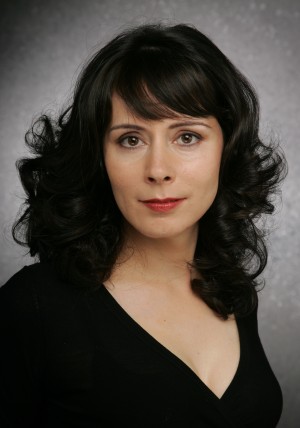Living the Renaissance Life, Part One: A Conversation with Traci Slatton
GALO: Speaking of which, besides the novel being strongly focused on the art of sculpture and your husband’s work, it is also a trip down memory lane, full of amicable and personal stories. Did it ever prove difficult for you or your husband to reveal yourselves to the world through these stories?
TS: Sabin and I both feel so strongly about his work as an artist that it’s easy for us to be transparent about it. That is, our personal stories point to something larger than ourselves. That kind of takes away the shyness.
GALO: How long did it take you to write this particular book?
TS: It took two to two-and-a-half years. I was writing other books along the way.
GALO: Do you have a favorite segment from it?
TS: I like the chapter, “An artist’s body of work is his biography.” I get to explain what I know about Sabin’s pieces and his life, how they relate to each other. First and foremost, I’m a storyteller!
GALO: Besides your husband, what other sources did you use as inspiration and research for this book?
TS: Sabin has a huge library of books about art history and sculpture. I used his books and I used the Internet, in particular, Jstor. I borrowed books from friends and bought some new ones. I also regularly interviewed Mr. James Cooper, editor of American Arts Quarterly.
GALO: In the novel, you write that sculpture is like a movie, in that it tells a story, and therefore, possesses a form of movement. What stories do your husband’s sculptures communicate?
TS: Sabin’s sculptures tell stories about what it means to be human, how we feel, how we grow, and how we aspire. They talk about our potential and how we can rise to the occasion.
GALO: Sabin, your husband, used a few models for his pieces that were included in the book. Did you model for any of them? Have you ever modeled for any of his pieces?
TS: Interesting question; before I was pregnant with our daughter, Sabin started a reclining piece for which I posed. It was very sensual, very beautiful. When we got married, he destroyed it. I don’t think he wanted other men looking at his wife that way. Right now, in our home, there’s a bust of me that he’s started. It’s lovely and from time to time he mutters something about finishing it — but I know he never will.
GALO: Out of the recent pieces that your husband has done, which is your favorite?
TS: My two favorites are Armor and Aphrodite. I admire Armor for its technical virtuosity; there simply isn’t anything as good that’s been sculpted in the last hundred years. I love Aphrodite because she’s beautiful and graceful.
GALO: When Sabin called you to tell you that he was about to use a chainsaw on his Aphrodite piece because her arm was unsatisfactory to him, what thoughts ran through your mind knowing how long it took him to create the piece? Was he calling to ask your opinion?
TS: Sabin kindly called to inform me, not to solicit my opinion. He didn’t ask what I thought because he already knew: I was thinking, “Oh crap, you’re throwing away how many thousands of dollars in model hours?”
GALO: In the novel you mention that you yourself used to be an artist. Do you still engage in any art forms besides writing? Have you thought about working on an artistic project with your husband in the near future?
TS: My only art is writing. My hands are clumsy, when it comes to drawing, painting, and sculpting. I am in awe of what Sabin and other artists can do.
GALO: Recently, you had a book launch at the Institute of Classical Architecture and Art with Sabin’s artwork on display on the third floor of the building. How was your novel received at the launch?
TS: People seemed to love The Art of Life, especially Sabin’s anatomical drawings in the back. Also, the ICAA is a beautiful building, and the high-ceiling room in which we held the show is architecturally pleasing. Even longtime fans of Sabin’s work got to appreciate his sculptures in a new way because of the elegant setting.
GALO: Apparently Elton John requested a copy of the novel to choose what artworks he would like to have on display in his house. Were you surprised that your work would be viewed alongside your husband’s by the singer-songwriter? Have you since gotten more requests of such stature?
TS: It’s humbling to think that a musical icon like Elton John might be looking at my words! I’m grateful. I hope that he enjoys the book and likes Sabin’s work.
GALO: You have a strong love for Renaissance art, which is not only evidential in your book The Art of Life but also across the plethora of your other published works, inclusive of Immortal and Botticelli Affair. What is it about this specific period in time that you enjoy the most? Does it all go back to your childhood love of the Winged Victory of Samothrace statuette visible at the Louvre?
TS: The Renaissance fascinates me partly because of the ravishingly beautiful art created during that period, and partly because of the ferment of ideas and social and intellectual evolution. That is, Michelangelo, Leonardo, Raphael, Fra Angelico, Fra Fillippo Lippi, etc., created some of the finest works of art humanity has every produced. At the same time, there were advances in banking and mathematics, science and literature, and travel. Part of what happened in the Renaissance is that great thinkers like Marsilio Ficino rediscovered the importance and beauty of antiquity — they, too, fell in love with sculptures like the Winged Victory.
(Article continued on next page)

